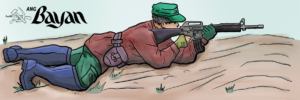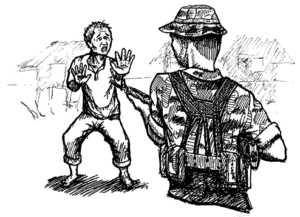The staggering price hikes in oil, goods and services
Prices of petroleum products skyrocketed on March 15 with the latest increase of up to ₱13.15 per liter of diesel, ₱7.10 for gasoline and ₱10.50 for kerosene. This is the 12th and sharpest price hike since the start of 2022.
This resulted in a cumulative price increase of almost ₱31 for petroleum products since January. This is almost twice the increase in prices for 2021. Increases in the prices of petroleum products in the provinces are even higher.
Oil companies argue that they will incur losses if they do not raise prices due to higher costs of crude oil imports. Thus, they let the people shoulder the increase in prices. This greed for profit has led Petron to amass ₱6.41 billion last year. The weekly price increase is in fact a depravity because companies have permanent reserves for several months which are not affected by fluctuations in prices. The Philippines imports petroleum products from China, Japan, South Korea, Singapore and other countries which have large depots for crude oil.
Drivers in public transportation are among those severely affected by oil price hikes. According to Pinag-isang Samahan ng mga Tsuper at Opereytor Nationwide (Piston), drivers lose up to ₱363 from their daily income. Small fisherfolks also lose almost ₱145 from earning ₱300-₱400.
Meralco was quick to announce that it will increase charges by ₱0.063 per kilowatt hour or equivalent to ₱13 per month for households who consume 200 kwh per month. It claims that this does not yet cover the recent oil price increases.
Meanwhile in markets, prices of canned meat products increased by more than ₱1 and condensed milk by ₱2.75. These amounts are still based on the oil price increases of the previous weeks. According to the Philippine Amalgamated Supermarkets Association, prices of basic goods increased by 3% up to 6% since the first week of March. Rice prices are also feared to increase by up to ₱3 per kilo owing not only to price hikes in oil, but also fertilizers.
Even smallscale businessmen are hit hard by transportation costs. In Benguet, a trucker who delivers vegetables to different markets in Manila spent an additional ₱7,000 in March compared to their budget in January.
The Duterte regime’s response to all these is to distribute a meager ₱200 per month or ₱6 daily for families belonging to the poorest 50% (only for 4Ps beneficiaries, according to a latest clarification from Malacañang). A paltry subsidy is allocated for drivers (₱6,500) and small fishermen. Aside from being limited, these subsidies do not reach everyone as processes are purposely made difficult and agencies are sluggish in releasing funds (in some parts of Northern Mindanao, drivers only receive ₱6,000, depending on their political affiliation).
Drivers and consumers are demanding an immediate rollback in oil prices to pre-2022 levels. They also demand, at least, a suspension of taxes on fuel. The Duterte regime rejected this, despite having collected more than ₱75 billion from fuel taxes.
Some of these demands were drummed up by democratic groups during several days of protests against oil price hikes from March 15-18. Coordinated actions were held in different parts of Metro Manila, Negros, Iloilo, Davao City and Legazpi City. Pamalakaya conducted a fishing strike at Laguna de Bay and Manila Bay.
Jeepney drivers are also amplifying the calls to increase fares up to ₱10. This is in tandem with the demand for wage increases, a rollback in prices of food and goods, an end to dumping of agricultural imports, increase in farmgate prices, and other urgent demands.



